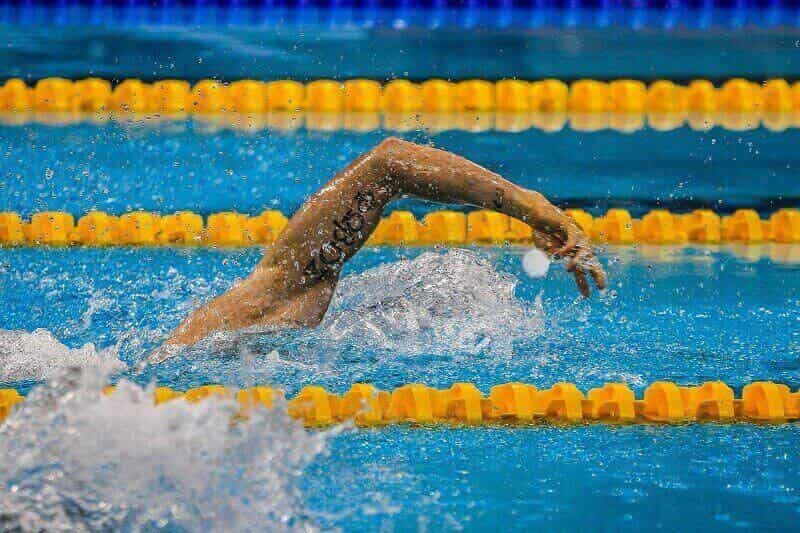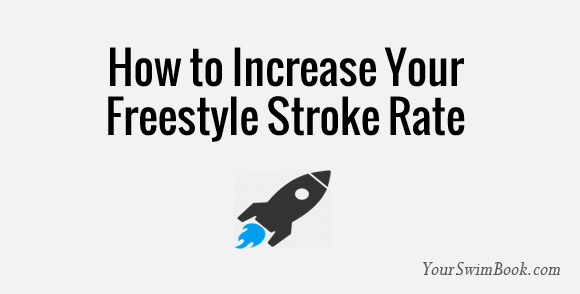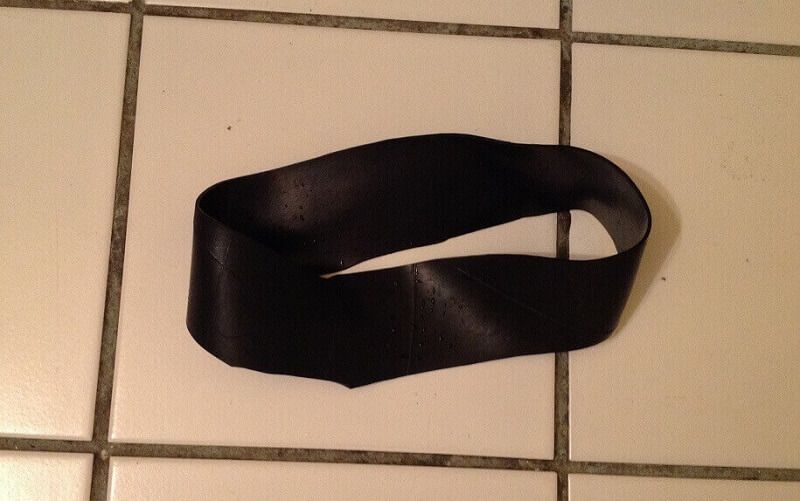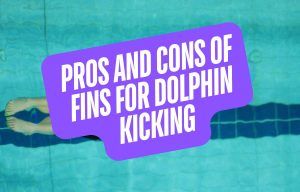Is your freestyle stroke rate stuck in first gear? Here is how to ramp up your stroke rate and get your arms turning over fast-fast-fast.
You have put in the meters and yards to develop a solid distance per stroke. You’ve got your technique on point and now it’s time to ramp up the stroke rate.
But how do we go about this?
Swimming with a high stroke rate is taxing, and as such, we can only do so much of it before our form falters and we get tired out. There are a number of different freestyle drills you can do to increase your freestyle stroke rate; from head-up freestyle, the dip-and-kick, and one of my stand-by drills, the old hand drag.
But if you really want to take your freestyle stroke rate to the next level, and get some power and conditioning work in at the same time, the solution is throwing one of these around your ankles:
Yup, no secret technical move, no fancy-pants piece of equipment, just a piece of rubber that you can throw around your ankles to prevent you from kicking.
But wait—doesn’t that make things harder?
Well, yes and no.
Granted, without a kick to help you balance in the water and push you forward your shoulders will be taking on all the work.
However, with your oxygen and blood-greedy legs out of the equation, and your kick unable to power you through the rhythm-sapping parts of your stroke, you can hit the high-number stroke rate digits for longer than if you were straight swimming.
Powering Up a High Octane Stroke Rate
I know some of you who have swum with ankles strapped up before are groaning. And yes, throwing a band around your ankles, removing the ability to kick or even keep your legs horizontal in the water, is hard.
But for swimmers who want to—
- Improve overall upper body strength in their freestyle stroke.
- Dramatically improve the power and endurance of the first half of their pull.
- And supercharge their stroke rate…
Swimming with a band is the ticket.
After all, using a band while doing freestyle (or any other stroke for that matter) will help you do the following:
- Increase shoulder rotation power. Without your legs to help dive your hand into the water you will have to utterly lean on your shoulders and back to generate power for your arm stroke. Freestylers should be attacking up and forward with their hands, and using a band requires you to elevate your shoulders and attack.
- Improves the power in your catch. Without the propulsion that comes from your hips and kick you will notice the soft spots in your arm stroke. For many swimmers, this is the catch. A soft catch on either arm will act as a speed bump and you will notice an immediate drop in speed and propulsion if your catch isn’t high and immediate upon hand entry.
- Improve overall shoulder and arm power. After doing even a few sets of band pulling you will feel the difference in the endurance of your upper body—it will grant you the sensation of gliding across the surface of the water the first time you swim afterwards. Not a bad feeling to have!
- Encourages an early hand catch. Not dropping your elbow in the catch is one thing, but getting into an early vertical forearm immediately is another. Gliding is where speed goes to die when sprinting. Because you need to be moving forward at all times—otherwise you will stop dead in your tracks—your hand will start dipping down quick and early (and if it isn’t already you should be encouraging this actively when swimming).
- Sky-rockets your stroke rate. For you sprinters out there this is the main goal, increasing the rate with which you can turn over your arms and shoulders. Swimming with a stroke rate at race levels is very taxing, and you can only do so much of it. Without your legs to sap you, band pulling allows you to approach the stroke rate goals you have for your sprinting and hold it for longer.
Adding Swimming with a Band to Your Training
When incorporating the band into your workouts remember the goal is not to do long bouts of band pulling (especially when you are doing it without a pull buoy). And the moment that your technique is disintegrating is the exact moment you stop for rest. No sense in encouraging bad habits, like your hand slipping out to the side, or your elbow dropping.
And yes, doing a lot of this type of swimming will tax your shoulders. More so than doing pull with a pull buoy, as you will be fighting the drag that comes with your legs dropping and won’t have the benefit of the pull buoy providing the lift to your hips.
(If you’ve got a rabid case of swimmer’s shoulder and shoddy posture in the water I would definitely not suggest this drill.)
This is not a drill for swimmers who don’t have good technique.
Swimming with a band is basically resistance training in the water. And just like lifting weights, if you are not doing it with awesome form and technique you are setting yourself up for injury at worst, and further ingraining shoddy technique at best.
So start small and scale up.
Start with a pull buoy if necessary. And keep your reps short and your stroke rate high.
Sets for Developing a Higher Freestyle Stroke Rate
Here are a couple of different sets that I have done recently with the band (and other assorted equipment).
With both sets, you will notice that I cap the end (or end each round) with high-intensity swim work.
Using a band is great for building endurance and power in your shoulders and arms, but ultimately the goal is to apply it to the stroke rate in your full-throttle swimming.
SET ONE
2 rounds through—
- 4×50 pull with paddles, PB and band @1 (desc 1-4)
- 8×25 swim with band FAST @ :45
- Extra 30 seconds rest
- 2×25 swim all out @ 1
- 10 deep water bobs to shake it out.
Only 900m in length, but it will ease you into the band work, and the two 25’s of swim at the end of each round are designed to help you incorporate the stroke rate work done with the band into your swimming.
SET TWO
- 20×50 pull with band @1 (emphasize a high stroke rate right out of the breakout)
- 100 backstroke easy
- 10×50 swim with band and paddles FAST @1:10
- Extra minute rest
- 4×50 swim as 25m BLAST!, 25m easy @1:15
- 20 minute hot tub for recovery because science says it works!
This set was originally done long course, and I was able to get down to :31 with the band and paddles. And again, when you get into the swimming at the tail end of the set you’ve “groomed” your high stroke rate into place so that it actually feels quite natural when you do some sprinting.
















